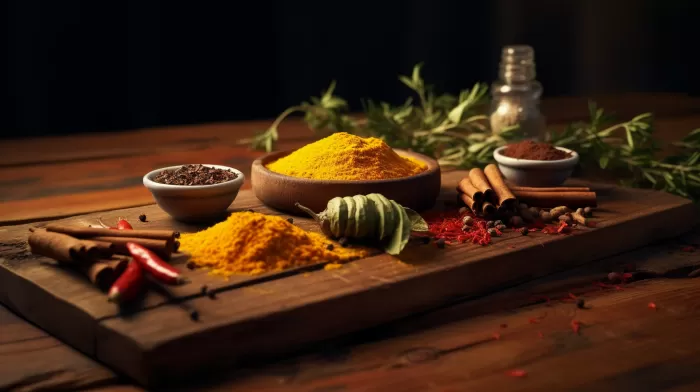Spices have been used for thousands of years in various cultures not only for flavoring but also for their health benefits. Traditional Chinese medicine and Indian Ayurveda, two of the world’s oldest medicinal systems, rely heavily on herbs and spices for therapeutic effects. Today, scientific studies have validated the health benefits of using spices in our daily diets, particularly for natural pain relief.
Let’s delve deeper into the pain-relief effects of three widely known spices: turmeric, capsaicin (red pepper), and ginger.
Turmeric: A curcumin powerhouse
Turmeric is a yellow root often used in Indian cuisine and it’s the most active health-enhancing component – curcumin. Curcumin is recognized for its potential to reduce inflammation and help the body heal.
Chronic inflammation is a major cause of pain and has serious health consequences, including heart disease. There are more than 5,500 peer-reviewed clinical studies pointing to curcumin’s positive effects, and it has been found to be as effective, yet safer, than more than a dozen prescription medications.
Capsaicin: Trick your brain into relieving pain
Found in chili and cayenne peppers, capsaicin is responsible for the burning sensation experienced when eating spicy dishes. It’s this same heat component that benefits pain relief.
Capsaicin works in the body by binding with the vanilloid receptor 1 (VR1), essentially tricking the brain into reducing pain signals by depleting nerves of “substance P.” This ensures that nerves can no longer send pain signals to the brain.
Numerous clinical trials have demonstrated the pain-relieving effects of using capsaicin, both topically and ingested. Capsaicin-based creams have been proven as safe and effective treatments for arthritis, and other studies have shown its effectiveness at reducing pain in patients with chronic neck pain and diabetic neuropathy.
Ginger: Delicious pain relief
Ginger is known globally for reducing stomach upset, nausea, and motion sickness while also enhancing the flavors of many dishes. Additionally, ginger is effective at reducing inflammation and various types of pain, including rheumatism and musculoskeletal disorders.
In a study examining ginger’s effects on rheumatism and musculoskeletal disorders, 100% of participants with muscular discomfort experienced pain relief after consuming powdered ginger. Moreover, 75% of the arthritic participants experienced reductions in pain and swelling, with no adverse side effects reported.
Another study revealed that women with painful menstruation experienced less intense and shorter pain duration after consuming ginger capsules three times daily.
Incorporating more turmeric, capsaicin, and ginger into our daily meals can significantly reduce chronic inflammation and pain levels, and the great thing is that they come with no side effects. These spices have been used for thousands of years, and modern science has confirmed their medicinal value, so we would do well to continue incorporating them into our routines for improved health and well-being.



